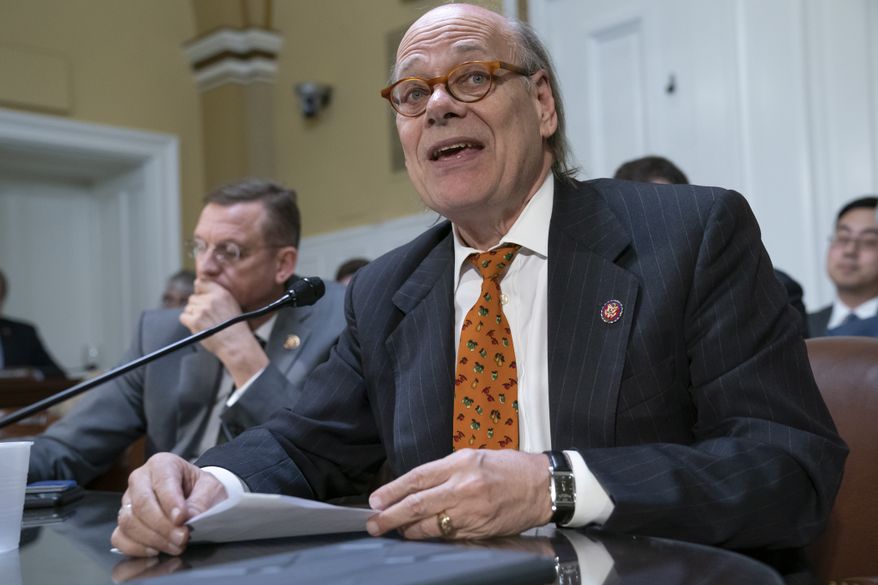We the Mostly Fat, Older, or Aching: US Rep Wants Seats Fit for Everyone

During a sometimes tense exchange with lawmakers, acting FAA Deputy Administrator Daniel Elwell announced that his agency will (finally) begin testing the safety of densely packed aircraft cabins later this year as required by the 2018 Seat Egress in Air Travel (SEAT) Act. Under the new rules, the FAA is required to set minimum safety standards for the size and spacing of airline seats.
“Americans are getting bigger and seat size is important but it has to be looked at in the context of safety,” Elwell told lawmakers in his testimony. “We are going to get you an answer on seat pitch.”
Last week, in a congressional hearing, SEAT Act co-sponsor, Rep. Steve Cohen of Tennessee took FAA Acting Deputy Administrator Daniel Elwell to task for failing to implement the 2018 Seat Egress in Air Travel (SEAT) Act, nearly a year after it was passed.
Now, faced with accusations of feet-dragging, Elwell told lawmakers on Thursday that the agency would begin evacuation testing involving 720 test subjects over a period of twelve days starting in November to determine if reduced seat size and reduced seat pitch adversely affect the amount of time required to evacuate a jetliner in the event of an emergency.
But, argued Congressman Cohen, that might not be enough. The statute further requires the agency to set minimum safety standards for seat size and pitch based on this testing. Cohen is adamant that those minimum safety standards have to account for the needs of everyone, not just the fit and able-bodied. Not including participants that accurately represent the size and relative physical fitness of the flying public would make it functionally useless, Cohen contined. Citing his own “bad leg,” the congressman even volunteered to participate as a volunteer himself in an often heated exchange with the FAA official.
Until the Seat Egress in Air Travel (SEAT) Act was passed last year, there were virtually no regulations determining how tightly U.S. airlines were permitted to pack passengers into commercial aircraft cabins. Public outcry over increasingly smaller seats, crammed tighter and tighter together led lawmakers to require the FAA to set minimum safety standards for both seat size and seat pitch.
Language in the SEAT Act requires the FAA to “study the size of airline seats and the distance between seating rows in determining whether airplanes can be safely evacuated in the statutorily mandated 90 seconds.”
The legislation was attached to the FAA Reauthorization Act of 2018 in response to growing concerns that close quarters and densely packed cabins of modern aircraft could make it impossible to evacuate a plane safely in the event of an emergency. The FAA had previously resisted numerous calls to create rules standardizing seat size and pitch.
“We don’t need to have another crisis like we had with the Boeing airplane,” Rep. Cohen said in public comments following the hearing. “I am concerned that the FAA has not fully complied with the provisions of my SEAT Act almost a year after it was signed into law. It is past time for the FAA to prioritize safe evacuation of airplanes in emergencies. I look forward to seeing the SEAT Act’s safety provisions implemented as soon as possible.”






















Re paul1268: It's right that Boeing narrow bodies have never changed width since being set in the skinny 1950's. But Airbus has updated this standard in their A320 series; the cabin is more than a half foot wider for more shoulder room for everyone. And check out the A220, even more width per seat. Let's hope Boeing gets with the program.
the airlines have gotten away with treating passengers as sardines for way..... too long. time to treat people like people again. charge enough to make a profit on a fare, it will sort itself out.
Out of curiosity, is there a regulation for car and bus seat sizes here in the US, since that's where this location of this argument it. I have heard passengers in other countries commenting that they )themselves) have to lose a few pounds because of the seat size, but never have I heard that come from an American accent. I am no gazelle myself, but I do try to maintain some level of human shape based on the design I originally came in.
CEO's like Douglas Parker have crossed the line of human dignity! And people wonder why air passengers are so unruly these days! THANK YOU Rep. Steve Cohen! I would love to be part of the advisory board on this subject!
Why oh why is price not fully considered. You can't have bigger seats with more room without charging more. It seems that people assume they can get more for free. Yippee! The free lunch. Big seat cheap price. Nope the world does not work this way. When airlines have tried to sell extra room for a slightly higher price, the market has responded by going elsewhere. Does anyone remember AA with its "More Room Throughout Coach" campaign. 34" pitch compared to 31 or 32 elsewhere. AA had to abandon the approach when its higher prices sent business to the other airlines. It is appalling that people assume that they are entitled to more without paying for it. This Congressman is nuts and an economic idiot.